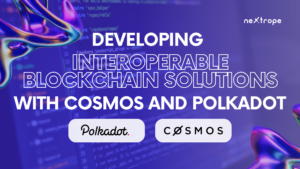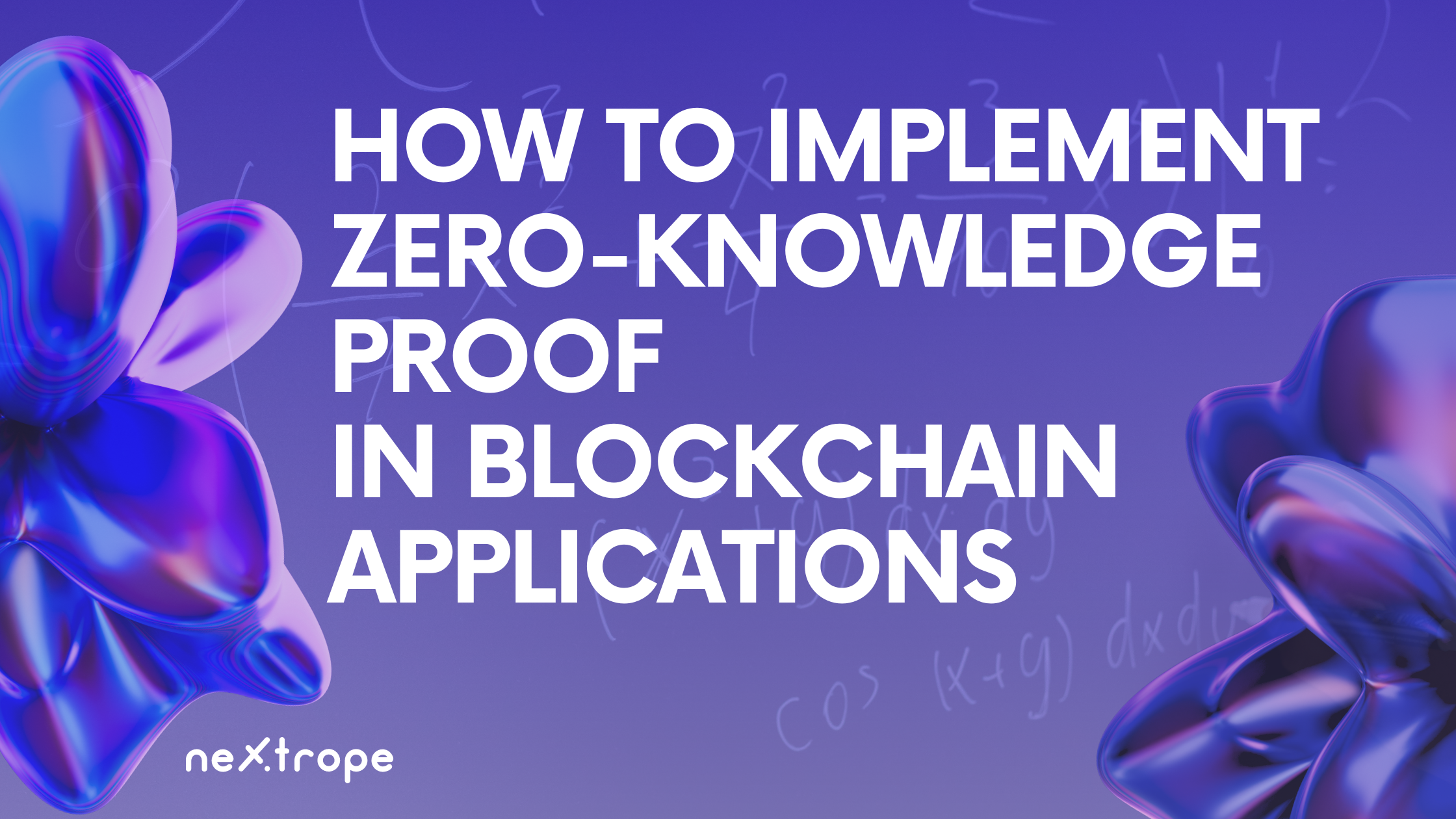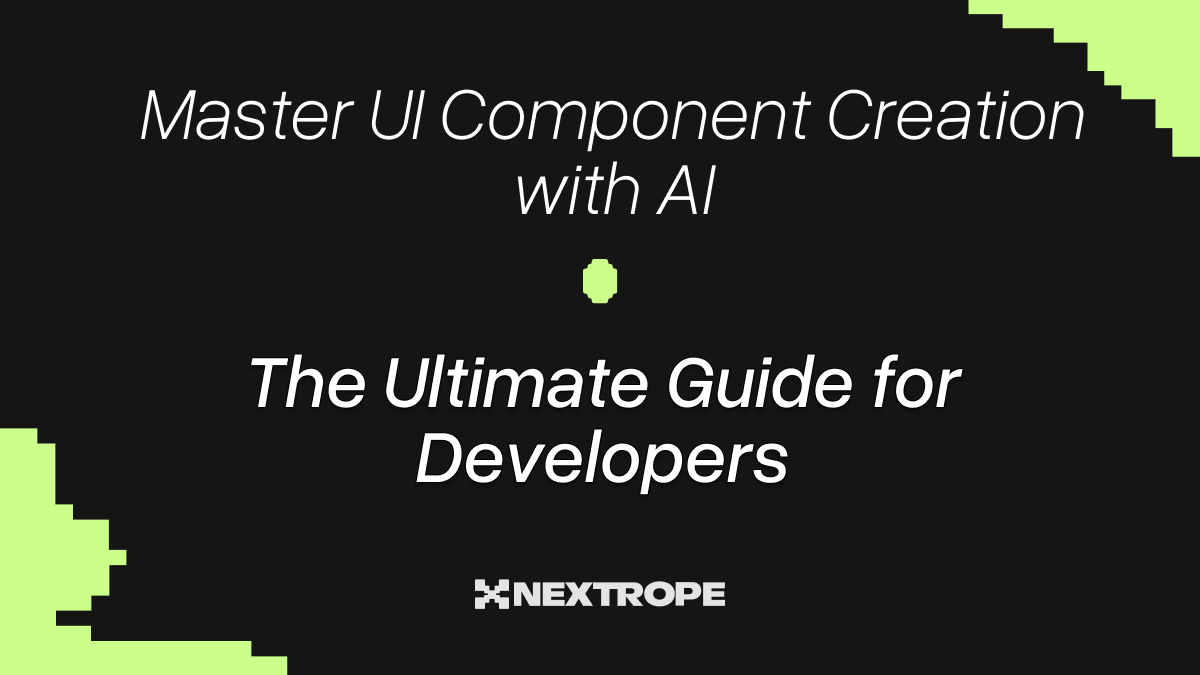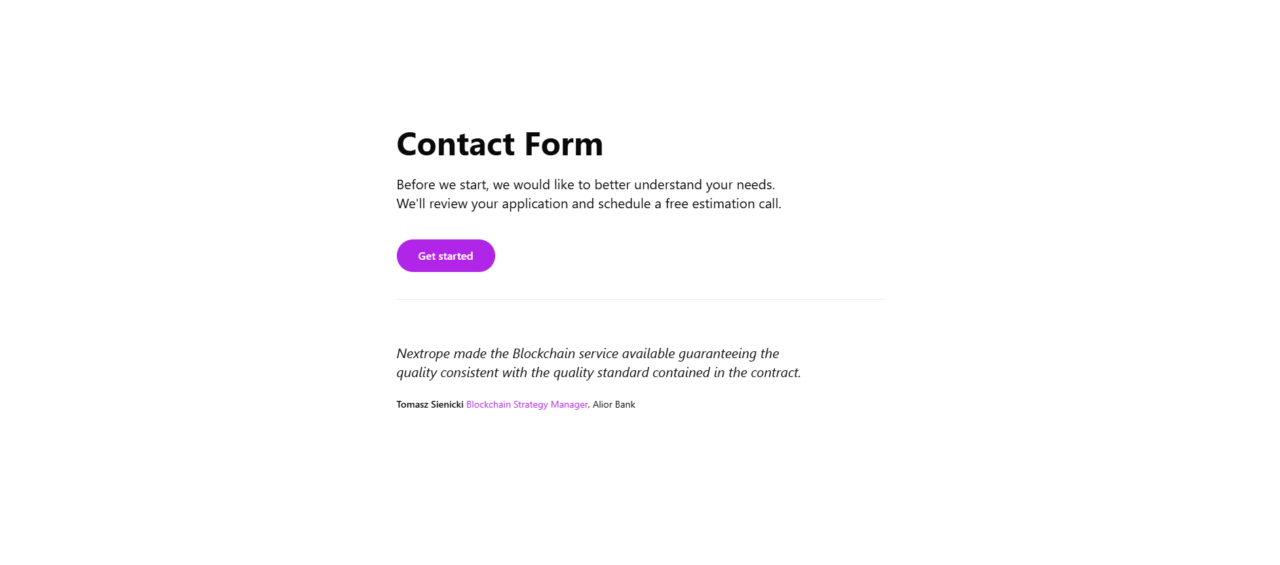The development of blockchain interoperability solutions has taken center stage in the ongoing advancement of decentralized technologies. The limitations imposed by isolated blockchain networks have heightened the importance of interoperable systems, paving the way for increased collaboration and innovation. In this article, we delve into the creation of such solutions using Cosmos and Polkadot. With their distinctive approaches to achieving blockchain interoperability, these platforms facilitate smooth communication and information transfer among diverse chains. Harnessing the power of Cosmos and Polkadot presents an array of opportunities for businesses and developers within the decentralized domain.
Understanding Blockchain Interoperability Solutions:
The term "blockchain interoperability" denotes the capacity of various blockchain networks to interact and exchange data effortlessly. Conventional blockchain configurations operate in a standalone manner, leading to isolated ecosystems that impede cooperation and restrict innovative potential.
By instituting a framework that enables differing blockchains to communicate with one another, blockchain interoperability solutions seek to surmount these constraints. These solutions augment the effectiveness, expandability, and utility of decentralized applications by allowing data and asset exchanges between chains.
The absence of interoperability presents considerable obstacles for organizations and developers. Enclosed networks obstruct information flow, impede cross-chain transactions, and constrict the generation of substantial decentralized applications. Blockchain interoperability solutions tackle these issues by setting up standards, protocols, and infrastructure that support communication among diverse blockchain networks.
Multiple advantages arise from implementing blockchain interoperability solutions, such as heightened flexibility, superior scalability, augmented liquidity, and diversified use cases. These solutions pave the way for cooperative opportunities, enable smooth asset transitions between chains, and encourage the growth of harmonious decentralized ecosystems.
Cosmos and Polkadot: Pioneers in Blockchain Interoperability
Blockchain technology has been hailed as revolutionary, offering transformative potential across a multitude of industries. But as with any disruptive technology, achieving its full potential requires overcoming certain technical obstacles, chief among them being the issue of interoperability. This is where Cosmos and Polkadot come into the picture, as they are leading pioneers in promoting blockchain interoperability.
The Internet of Blockchains - Cosmos
Cosmos, often referred to as the "Internet of Blockchains", is a decentralized network of independent parallel blockchains, each powered by classical Byzantine Fault Tolerance (BFT) consensus algorithms like Tendermint.
It was designed from the ground up to solve the "hard" problems of the blockchain ecosystem, and interoperability stands at the forefront of these issues. To enable the seamless transfer of data and assets across different blockchains, Cosmos developed the Inter-Blockchain Communication (IBC) protocol. This protocol allows various blockchains in the Cosmos network, known as zones, to communicate with each other, thereby fostering an ecosystem of interoperability.
Polkadot: Enabling a Multichain Universe
Polkadot, on the other hand, is another innovative platform that is built to connect private and consortium chains, public and permissionless networks, oracles, and future technologies that are yet to be created in the Web3 ecosystem.
At the heart of Polkadot's interoperability solution is its multichain technology. This technology is underpinned by Substrate, a blockchain development framework, and it employs a number of unique components such as Parachains and the Cross-Chain Message Passing (XCMP) protocol. Polkadot's structure allows for multiple blockchains to interoperate while maintaining their own unique consensus algorithms and governance models.
In essence, both Cosmos and Polkadot are at the forefront of blockchain interoperability. They offer unique solutions to allow for seamless communication and transfer of data and assets across different blockchain networks. Developers interested in building cross-chain applications would do well to understand the strengths and capabilities of these pioneering platforms.
Developing Blockchain Interoperability Solutions: A Comparative Analysis
When it comes to developing interoperable blockchain solutions, both Cosmos and Polkadot are often the platforms of choice. While they share the common goal of connecting disparate blockchain networks, their approach, underlying technology, and features differ significantly. A comparative analysis of these two platforms can offer valuable insights for developers looking to leverage their capabilities for cross-chain applications.
Similarities between Cosmos and Polkadot
Despite their differences, Cosmos and Polkadot share several similarities in their approach to blockchain interoperability:
- Shared Vision: Both platforms aim to create an internet of blockchains that can communicate and interact seamlessly with each other.
- Security: Both Cosmos and Polkadot place a high priority on security, leveraging innovative consensus mechanisms and cryptography to ensure the security and integrity of transactions across blockchains.
- Scalability: Both platforms are designed to address the scalability issues plaguing traditional blockchains. They achieve this by allowing multiple blockchains to operate concurrently, sharing the workload and improving the overall throughput of the network.
- Governance: Both platforms have inbuilt governance mechanisms that enable network participants to propose and vote on changes to the network, fostering a democratic and decentralized ecosystem.
Differences between Cosmos and Polkadot
While they share similar goals, there are key differences in the design philosophy and architecture of Cosmos and Polkadot:
- Consensus Mechanisms. Both platforms use a form of Byzantine Fault Tolerance (BFT) for consensus, Cosmos uses Tendermint BFT. Polkadot uses a hybrid consensus mechanism combining elements of BFT and Proof-of-Stake (PoS).
- Communication Protocol. Cosmos uses the Inter-Blockchain Communication (IBC) protocol to facilitate communication between different blockchains. Polkadot, on the other hand, uses the Cross-Chain Message Passing (XCMP) protocol for inter-blockchain communication.
- Network Structure. Cosmos operates as a network of independent blockchains called zones, each powered by Tendermint BFT. Polkadot’s multichain network consists of a main relay chain and multiple parachains, each operating potentially different consensus mechanisms.
- Security Model. In Cosmos, each blockchain is responsible for its own security. Polkadot, however, follows a shared security model. The security of all parachains is pooled and maintained by the validators of the relay chain.
Understanding these similarities and differences can guide developers in choosing the right platform based on their specific requirements and objectives for interoperability. Both Cosmos and Polkadot offer powerful tools and frameworks for creating interoperable blockchain solutions, and the choice between them will often depend on the specifics of the use case at hand.
Practical Applications: Blockchain Interoperability Solutions in Action
Use Cases of Cosmos
Cosmos is a highly popular choice for developing decentralized applications (dApps) due to its scalability, modularity, and interoperability. Its architecture is designed to facilitate seamless cross-chain communication, making it ideal for a range of applications:
Decentralized Exchanges (DEXs): Cosmos is well-suited for building decentralized exchanges to support trading across multiple blockchains. The Gravity DEX, for instance, is a DEX built on the Cosmos network that allows users to trade tokens across different blockchains1.
Gaming: The scalability and modularity of the Cosmos network make it an ideal platform for blockchain-based games that require high performance and interoperability. ChainGuardian, a game built on the Cosmos network, allows players to battle each other using different characters and weapons1.
Cross-Chain Payments: The Cosmos network’s interoperability can facilitate cross-chain payments, allowing users to send and receive payments across different blockchain networks. This functionality reduces friction and increases efficiency in cross-border payments1.
Use Cases of Polkadot
Polkadot, on the other hand, offers developers a shared platform to create decentralized applications. It employs a combination of parachains, Proof of Stake protocols, and Virtual Machine-based technologies to address the scalability issues faced by other blockchains like Ethereum. Here are some of its notable use cases:
Interoperability Through Parachains: Polkadot's parachains enable other projects to build their networks and applications on Polkadot, allowing all these networks to interact with each other without the need for additional coding. Parachains are more customizable and give developers more flexibility than competitors like Ethereum. They are connected to the overall Polkadot infrastructure via a 'Relay Chain,' ensuring cross-chain interoperability through a set of robust governance protocols2.
Use in DeFi Platforms: Polkadot's parachains are also being used by decentralized finance platforms like Acala. Acala, the first parachain slot winner, acts as a liquidity pool from which Polkadot finances further projects within the network. This financing method is a crucial first step for Polkadot, as it creates launch momentum for even more projects2.
Connecting to Ethereum: Polkadot also enables seamless cross-chain operability with Ethereum, as evidenced by the second parachain slot winner, Moonbeam. Moonbeam acts as a bridge for Ethereum developers to extend the use of Ethereum Solidity code, Ethereum Virtual Machine, and its various other tools over to Polkadot. This integration expands the scope of Polkadot's cross-chain ambitions and provides a new level of connectivity between the two blockchains2.
Conclusion
The advancement of decentralized technologies is significantly supported by blockchain interoperability solutions, such as those provided by Cosmos and Polkadot. Known as the "Internet of Blockchains," Cosmos employs the IBC protocol to facilitate smooth communication between parallel blockchains. On the other hand, Polkadot utilizes its multichain technology, including parachains and XCMP protocol, to establish connectivity while preserving unique consensus and governance models.
Interoperability solutions have numerous advantages like flexibility, scalability, liquidity, and a wide range of use cases. Both Cosmos and Polkadot serve distinctive requirements; hence it is essential for developers to comprehend their differences.
Practical implementations encompass decentralized exchanges, gaming, and cross-chain payments provided by Cosmos, while Polkadot offers parachains, DeFi platforms, and Ethereum integration. Through embracing blockchain interoperability solutions like Cosmos and Polkadot, businesses and developers have the opportunity to foster collaborative innovation and construct powerful decentralized applications that will shape the future of decentralization.
Would you like to create your own project on blockchain and be an innovator in your industry? Contact us!
 en
en  pl
pl 












